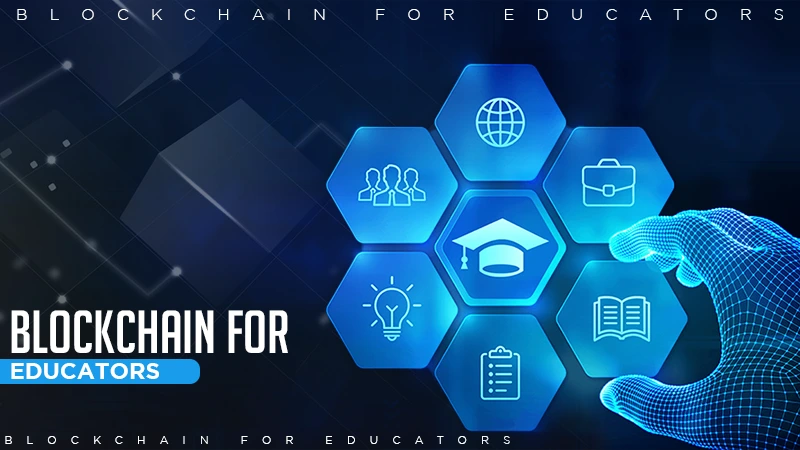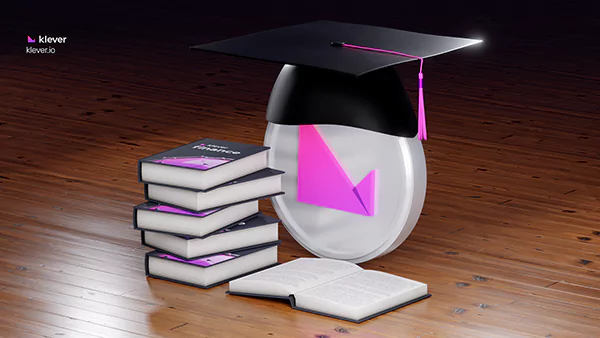
Blockchain is not something that only financial professionals should know about; it is becoming a harbinger of a radical change in the field of education. This innovative technology offers much-needed solutions to the existing problems that have plagued such aspects of the academic sector as credential verification, the ease of resource sharing, et cetera.
Along with being a modern and trendy tech revolution in the finance & tech industry, blockchain is now also making a noticeable difference in the education sector. Continue with the article till the end to know how.
Redefining Education with the Help of Blockchain
Take, for instance, the possibility to keep one’s academic credentials at arm’s length. What could be more convenient than having all of one’s achievements in a single distant location, which would be as easy as registering with the help of an ID?
Blockchain makes that “something” that, at first, is hard to believe possible reality by creating an immutable passage to the record that any college or university institution.
Key Advantages for Educators and Academic Institutions
Automated Record Keeping
Blockchain can alleviate professors of the burden of students’ record keeping. A lot of manual updates must be made by teachers to keep records of grades, attendance, and accomplishments up-to-date.
This effort can be eliminated by simply providing a secure storage place for those records, allowing teachers to get easy access to updated student records almost at a glance. This system allows educators to place more focus on their students or research without the said administrative burden.
Credentialing the secure and transparent way
Professors spend a significant amount of time either verifying journals for qualifications or issuing certifications. This can be done thanks to the immutable ledger; significantly, educators no longer have to worry about qualifications being given out if they are not secure.
When an academic record has been logged into the records, it cannot be altered in any way, making the “American way” of eliminating the middleman more feasible and more trustworthy
Enhanced Research Collaboration
Blockchain facilitates easier collaboration on research projects across institutions or even globally. It allows for secure sharing of data and findings, ensuring that all contributions are accurately recorded and attributed, which is noteworthy for maintaining integrity in research collaborations.
Peer Review Processes
This tech could be useful in other aspects of peer review; consider the peer-review process for papers. Interestingly, all reviewers could have all their suggestions protected by time stamps on a peer-to-peer network. This would make biasing the review process difficult for editors or reviewers.
Intellectual Property Protection
Blockchain technology is a secure way for academic professors to ensure they own what they invent regarding material and research findings. By registering it, teachers can get a safe way to date and time-stamp their research contributions. In that case, they will have a claim to their ownership and will be recognized as the original inventors.
Efficient Resource Allocation
Used in managing resources within institutions, this includes managing schedules and resource booking, as well as maintaining the budget. In such a way, scholar members will have a lighter administrative burden.
Lifelong Learning Opportunities
This technology can pave the way to a more fluid system of credits and credentials as well as access to higher education for short-term, learning, and other services for adult learners.
Professors could oversee a system where students can collect credits from various institutions based on different educational experiences. In turn lecturers can access that information to contextualize the knowledge they are presently offering.
However, there are several issues and challenges associated with the implementation of blockchain in education. First and foremost, the technology requires relatively complex infrastructure and administration training. Moreover, the use of blockchain in education raises major issues about private data and sensitive user information that may be misused.
Nevertheless, the integration of a low-code platform such as Klever Blockchain into the educational ecosystem opens up significant opportunities for operational capacity and innovative potential. As shown below, such technologies could be rather beneficial in a more simplified form:
Benefits of Low-Code Blockchain In Academia

Development and Integration
Low-code platforms bridge the gap between non-technical educators and blockchain technology, providing a user-based methodology to create personalized applications with little or no coding.
Creation and implementation in instants
Low-code enables universities to not only create solutions but also deploy them rapidly. The speed to adopt new technological advancements in education allows schools to keep pace with changing demands. On a larger scale, the increased frequency and improvements accomplished quickly can transform education.
Flexibility and customization
Educators can further edit the applications to meet their criteria, including tracking student records and sharing in-depth research.
Enhanced information security
These platforms offer the same high degree of security that traditional blockchains offer. Securing a vast amount of students’ information and academic research is a task for a low-code platform.
Unified collaborations
Low-code securely enables access to in-depth research and academic studies across institutions easily. It unites these programs, giving them a pathway for individuals to acknowledge the contribution to each.
Sustainable and evident records
It retains immutable and verifiable documents.m. of scholar records. This reduces the bureaucratic pressure involved in transferring credits and recognizing degrees.
The Future is Near: Blockchain for Future Education.
As more learning institutions experiment with and implement blockchain, it is likely that special solutions designed for this sector will be created . Many potentials can make the learning environment not only fully comprehensive but also more accessible. This tech has the ability to redefine the human learning experience .
Its long-term scope is possible that learning accomplishments will be easily registered, and academic documents will be simply verified, with minimum administrative expenses. We are just getting started, and the teachers who are anxious to take things to the next level will find that the sky is at their feet. Professors’ lives might be made a little easier in a variety of ways using it.
Here is how the life of a professor will be revolutionized in academia: Blockchain technology should free professors from administrative burdens, secure academic results, and encourage cooperation to free faculty up to focus on what they do best: teaching, mentoring, and research. The system is a breakthrough not only for the professors but also for the educational and research quality in academia.
As we continue to witness the evolution of technology, it’s necessary for educators to stay informed and proactive about the potential of blockchain to transform the educational landscape. We encourage you to keep an eye towards the future, where these technological advancements could bring innovative solutions and enhance learning experiences in our classrooms.